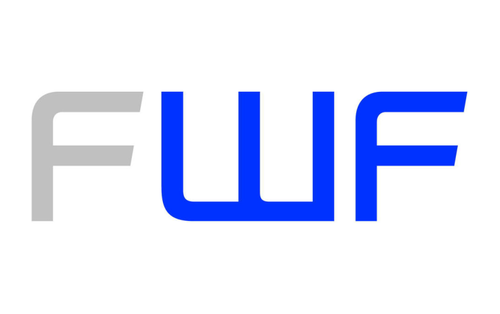Project-Related Publications
Freie Universität Berlin’s research centre „Organized Creativity“ (Organized Creativity • Fachbereich Wirtschaftswissenschaft), has published several papers that may be of interest to EURAM members in general and to members of SIG 06 “Innovation” and SIG 10 “Project Organizing” in particular. All papers are available open access:
Otto, B. D., Schuessler, E. S., Sydow, J., & Vogelgsang, L. (2024). Finding creativity in predictability: Seizing kairos in chronos through temporal work in complex innovation processes. Organization Science, 35(5), 1795-1822. https://pubsonline.informs.org/doi/full/10.1287/orsc.2020.14743
Schiemer, B. (2024). It’s about what happens in the meantime: The temporal interplay of individual and collective creativity. Organization Science. https://pubsonline.informs.org/doi/full/10.1287/orsc.2021.15117?casa_token=D6g5wHkAFDgAAAAA%3AU41KsR7mWjxhzPmSBooIfI1amm2RDgT-2bP-LMC4vQDOlOHRzT3RXC6hzMe7PPvpQ0iEY9jVEpI6
Zangerle, K., Dobusch, L., & Weiskopf, R. (2024). Barracudas, Piranhas and crowds: making ideas valuable in pharmaceutical innovation through opening and closing practices of valuation. Innovation. https://www.tandfonline.com/doi/full/10.1080/14479338.2024.2339257
Theel, T., & Sydow, J. (2024). Organizing creativity with constraints—Insights from popular music songwriting teams. Journal of Management Inquiry, 33(3), 265-283. https://journals.sagepub.com/doi/full/10.1177/10564926231191087
Schiemer, B., Schüßler, E., & Theel, T. (2023). Regulating nimbus and focus: Organizing copresence for creative collaboration. Organization Studies, 44(4), 545-568. https://journals.sagepub.com/doi/full/10.1177/01708406221094201
Hondros, K., Schiemer, B., & Vogelgsang, L. (2023). Beyond personal safe spaces: Creating and maintaining collective environments for meaning and identity on digital platforms. Organization, 30(5), 809-829. https://journals.sagepub.com/doi/full/10.1177/13505084231168094
Hondros, K. (2023): Liminale Kreativität - Praktiken kleinster Transformationen in der Produktion von Soundalikes, Büchner-Verlag, Marburg.
Hondros, K., Vogelgsang, L. (2022). Emerging novelty through imitation? Discovering emulation in process of creating alikeness. Research in the Sociology of Organizations, 77, 89-110.
Vogelgsang, L. (2022). When creativity gets you fired—why professionals tasked with innovation employ subversion when facing competing institutional demands in hybrid organizations. Journal of Professions and Organization, 00, 1-21.
Dobusch, L., Hondros, K., Quack, S., & Zangerle, K. (2021). Between anxiety and hope? How actors experience regulatory uncertainty in creative processes in music and pharma. In: Research in the Sociology of Organizations, 75, pp. 137–160.
Thiel, J. & Grabher, G. (2021). Embracing Temporal Ambiguities? Innovation and the Temporalities of Large-Scale Projects. In: In: Thiel, J., V. Dimitrova and Ruge, J. (eds.). ConstructingInnovation: How Large-Scale Projects Drive Novelty in the Construction Industry. Berlin: Jovis, pp. 111-126.
Melchior, A. (2021). Neu, wertvoll, kreativ: Die Generierung und Bewertung von Ideen im kreativen Prozess pharmazeutischer F&E Projekte. Köln: GESIS - Leibniz-Institut für Sozialwissenschaften.
Schuessler, E., Cohendet, P., & Svejenova, S. (Eds.). (2021). Organizing creativity in the innovation journey. Bingley, UK: Emerald https://www.emerald.com/insight/publication/doi/10.1108/S0733-558X202175
Schmidt, T., Sydow, J. (2021). Innovation und Kreativität in der Unternehmensgründung. In: Blättel-Mink, B./Schulz-Schaeffer, I./Windeler, A. (Eds.): Handbuch Innovationsforschung. Wiesbaden: Springer VS, 295-314.
Schüßler, E., Schiemer, B. (2021). Innovation und Organisation. In: Blättel-Mink, B./Schulz-Schaeffer, I./Windeler, A. (Eds.): Handbuch der Innovationsforschung. Wiesbaden: Spinger VS, 395-410.
Schiemer, B., Duffner, R., Ayers, S. (2021). Theories of Creativity: The Significance of the Insignificant. A Graphic Novel. Sociologica, 15(1), 163-191. https://doi.org/10.6092/issn.1971-8853/12775
Otto, B., Schüßler, E., & Zangerle, K. (2020). Greenhouses are made of glass. Tensions in experimental spaces for creative collaboration in front-end pharmaceutical research. In: Montanari, F., Eikhof, D.R., Mattarelli, E., & Scapolan, A. (Eds.). The collaborative turn. How collaborative spaces foster collaboration and creativity. London: Routledge, 238-251, pdf: https://www.taylorfrancis.com/books/collaborative-spaces-work-fabrizio-montanari-elisa-mattarelli-anna-chiara-scapolan/e/10.4324/9780429329425
Melchior, A., Schiemer, B. & Grabher, G. (2020). „Hägerstrand online“: Ein methodisches Konzept zur Analyse raumzeitlicher Trajektorien in Kollaborationen. Raumforschung und Raumordnung | Spatial Research and Planning, 78(1): 1–13
Schiemer, B., Schüßler, E., Grabher, G. (2020). Collaborative innovation online: Entanglements of the making of content, skills, and community on a songwriting platform. Research in the Sociology of Organizations 57 (64): 293–316.
Schmidt, T., Sydow, J. (2020). Innovation und Kreativität in der Unternehmensgründung. In: Blättel-Mink, B./Schulz-Schaeffer, I./Windeler, A. (Eds.): Handbuch Innovationsforschung. Wiesbaden: Springer VS.
Ortmann, G., Sydow, J. (2019). Kreative Organisation? In Ketten tanzen. In: Großmann, A. (Hrsg.): Kreativität denken und gestalten. Tübingen: Mohr Siebeck 89 - 102.
Schüßler, E., Schiemer, B. (2019). Innovation und Organisation. In: Blättel-Mink, B./Schulz-Schaeffer, I./Windeler, A. (Eds.): Handbuch der Innovationsforschung. Wiesbaden: Spinger VS. (in print).
Ortmann, G., Sydow, J. (2018). Creativity in/of organizations for managing things to come – Lessons to be learnt from philosophy. In: Krämer, H./Wenzel, M. (Eds.): How Organizations Manage the Future: Theoretical Perspectives and Empirical Insights. London: Palgrave-Macmillan, 67-88.
Grabher, G. (2018). Marginality as strategy: Leveraging peripherality for creativity. Environment and Planning A, 50 (8): 1785-1794.
Sydow, J. (2018). From dualisms to dualities: On researching creative processes in the arts and sciences. Environment and Planning A, 50(8): 1795-1801.
Lange, B., Schüßler, E. (2018). Unpacking the middleground of creative cities: Spatiotemporal dynamics in the configuration of the Berlin design field. Regional Studies, 52(11): 1548-1558.
Grabher, G., Melchior, A., Schiemer, B., Schüßler, E. and Sydow, J. (2018). From being there to being aware. Confronting geographical and sociological imaginations of copresence. Environment and Planning A 50 (1): 245-255.
Braun, T., Ferreira, A., Schmidt, T. and Sydow, J. (2018). Another Post-heroic View on Entrepreneurship: The Role of Employees in Networking the Start-up Process. British Journal of Management 29 (4), 652-669.
Fortwengel, J., Schüßler, E., Sydow, J. (2017). Studying Organizational Creativity as Process: Fluidity or Duality? Creativity and Innovation Management 26 (1): 5-16.
Schüßler, E., Sydow, J. (2015). Organized Events at the Front- and Backstage of the Creative Industries. In Jones, C., Lorenzen, M. and Sapsed, J. (Eds.). Oxford Handbook of Creative Industries. Oxford: Oxford University Press, 284-300.
Schüßler, E., Grabher, G., Müller-Seitz, G. (2015). Field-configuring Events as Arenas of Learning and Innovation. Industry & Innovation 21 (7): 165-172.
Grabher, G., Ibert, O. (2014). Distance as Asset? Knowledge Collaboration in Hybrid Virtual Communities. Journal of Economic Geography 14 (1): 97-123.
Dobusch, L., Schüßler, E. (2014). Copyright Reform and Business Model Innovation: Regulatory Propaganda at German Music Industry Conferences. Technological Forecasting & Social Change 83: 24-39.
Costas, J., Grey, C. (2014). Bringing Secrecy into the Open: Towards a Theorization of the Social Processes of Organizational Secrecy. Organization Studies 35 (10): 1423-1447.
We thank the German Research Foundation (DFG) and the Austrian Science Fund (FWF) for invaluable support of these projects.



